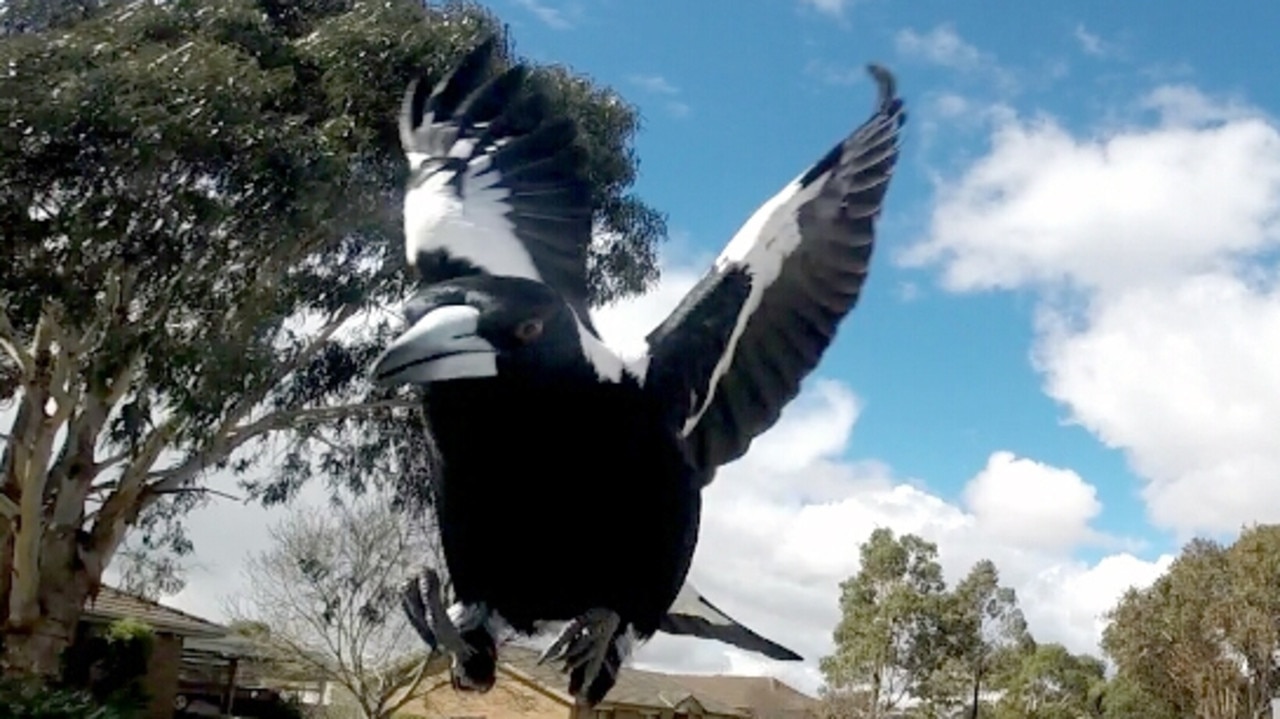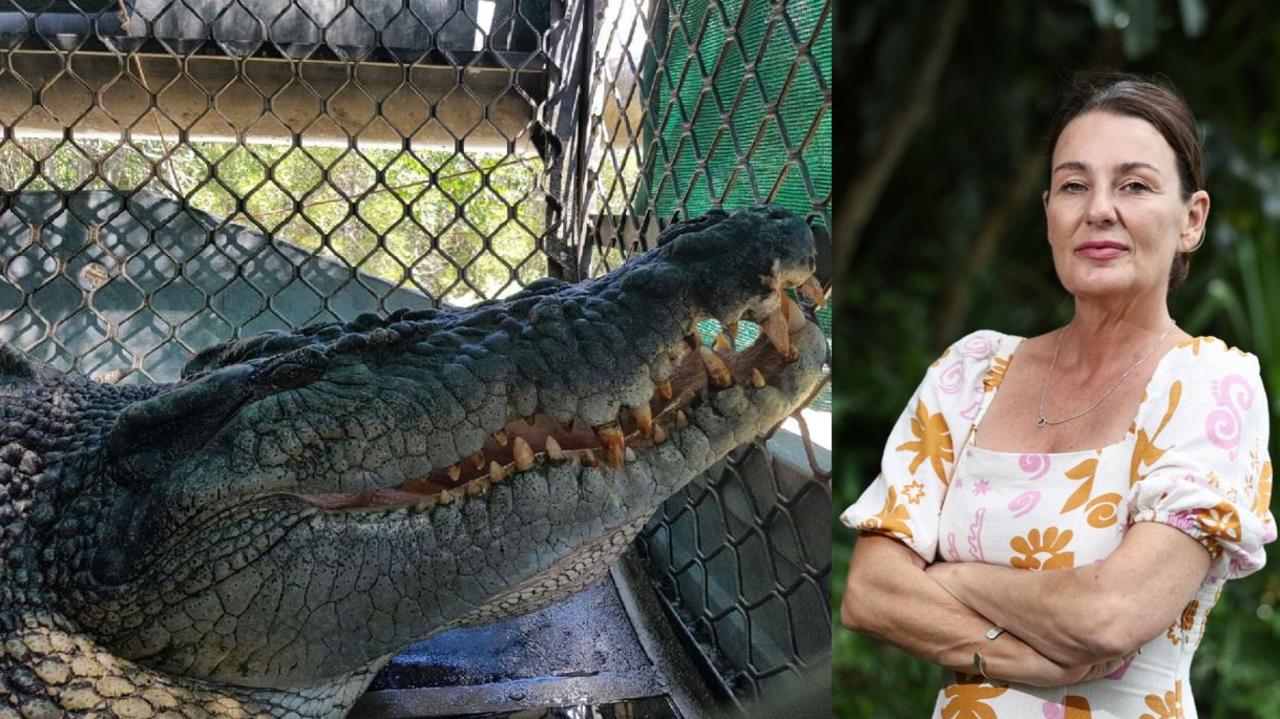Extended plover swooping season in Mackay’s Northern Beaches explained
If it feels like plovers have been dive bombing with their ‘utterly terrifying’ stare for months on end, you’re not wrong. Here’s why there’s been a population explosion of these ‘urban terrorists’.
Pets and Wildlife
Don't miss out on the headlines from Pets and Wildlife. Followed categories will be added to My News.
The reason “urban terrorists” are breeding more and swooping longer is likely down to the weather.
Unlike magpies who generally stick to breeding from September to November, masked lapwings — also known as spur-winged plovers — can technically breed continuously in the “good times”.
The native wading birds are known for their loud warning call when you obliviously approach eggs camouflaged somewhere on mown lawn in suburbia.
They are also notorious for continuously dive bombing, with a fixed “terrifying” stare and pointy spurs on proud display, anyone who dares venture too close during breeding season.
They not only swoop to protect the eggs but also the chicks, sometimes until they go off to breed for themselves.
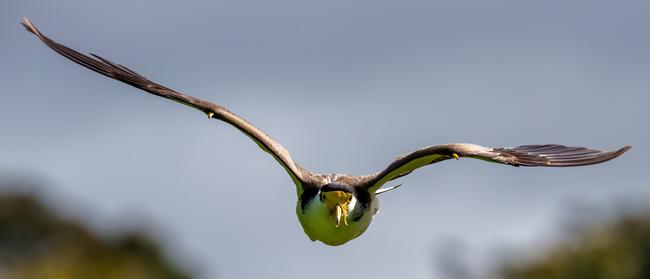
Plover numbers have become so prolific in Mackay’s Northern Beaches that it can be impossible to find a safe path to the dog park or the beach without encountering the feisty aggressors protecting their “precious chicks”.
Urban behavioural ecologist Darryl Jones has studied plovers, magpies and curlews in urban settings for 40-odd years.
He said native animals moving into cities “to hang out with us” was a huge challenge.
“Most animals can’t cope with people,” he said.

“They get scared of them and there’s some really good reasons why they should be worried about people.
“But the plover is one of the species that have moved in very happily.
“We provided just what they need, like lots of grassy areas and we water them all the time. So they’ve got lots of food, plenty of open space.”
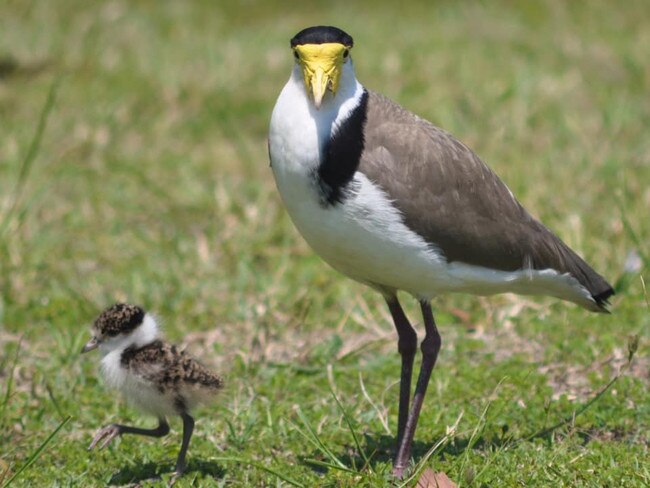
Mr Jones describes the plover as an olive, brown, green and white wading bird with a slender build.
He estimates they live for 10 to 12 years and mate for life.
Mr Jones says the name masked lapwing comes from the yellow flaps down the side of their faces that seem to grow larger during breeding season to attract mates, and males may also use them to sort who is the biggest and toughest.
But he said it was the yellow pointy spurs, extensions of the bone from the equivalent of their elbows, on their wings that could cause lifelong fear of the birds.
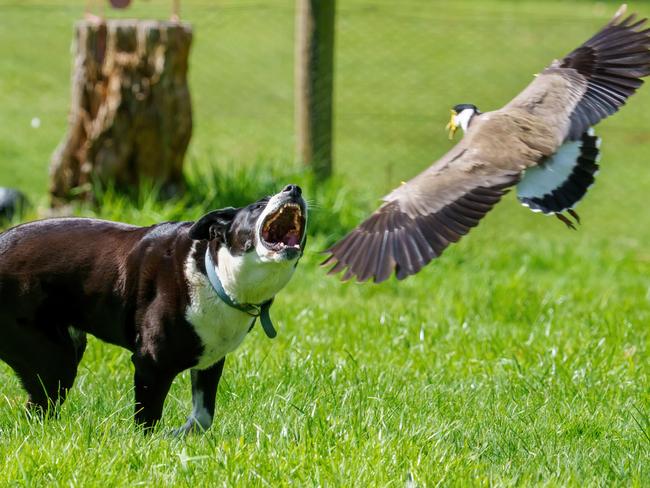
Mr Jones said unlike magpies, plovers colliding with people when they swooped was “extremely rare” unless by accident.
“While it’s all right for me to say that, it’s utterly terrifying,” he said.
“I mean, they’re screaming this horrible scream. They’ve got these big hooks on the end of their wings.
“Even though they don’t hit people, it’s probably more terrifying than magpies.
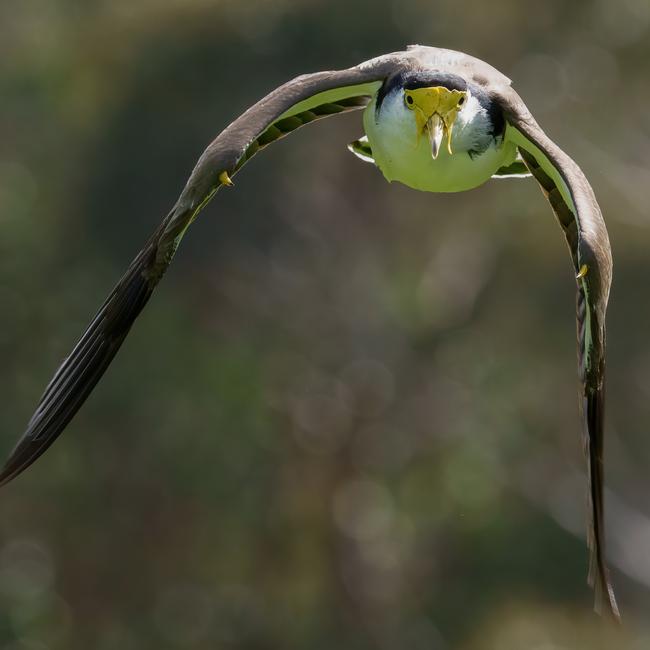
“The interesting thing about magpies is they sneak up; they’re stealth bombers.
“They come from behind, and you don’t know you’ve been targeted until it’s too late, and you’ve been whacked in the back of the head or something.
“So they take you by surprise whereas the plovers will just come straight at you, and so you can see them coming, and it’s very terrifying.

“Thankfully, the physical harm is probably low but mental stress and just terror … (the fact) these are urban terrorists is not to be denied.
“I’ve seen so many traumatised kids that just don’t want to go outside any more, because they got attacked by a plover at some stage.”
Mr Jones said plovers were choosing “insane” places in suburbia to nest, often laying their eggs in highly-populated and dangerous areas like playing fields, parks, road verges and yards.
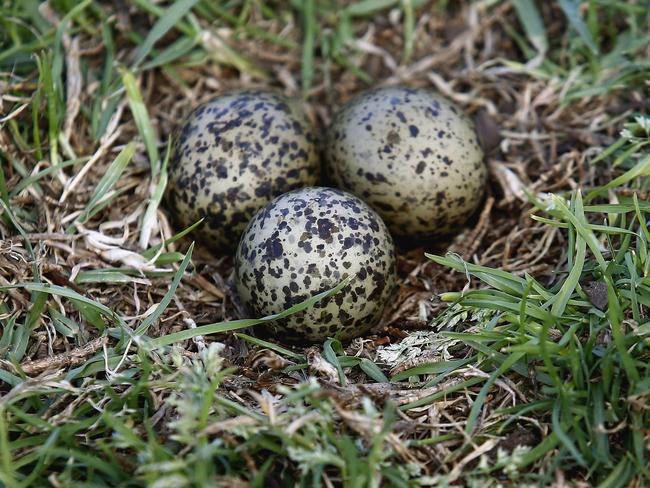
He said it was no surprise only about 10 per cent of plover babies survived but given the prolific numbers this season, they must be doing something right.
“Honestly the places they put their nests are just insane, you know, (10cm) from the road with cars going right past, or in the middle of a gravel car park or something, so they’ve got very little sense in terms of where to put their nests,” he said.
“And then, they don’t seem to be thinking about ‘so when the chicks hatch, what are they going to do?’ It’s just crazy.

“Why an individual pair of plovers will put their nest where it is, is impossible to understand.
“You could say there’s 20 reasons why that’s dumb, why you put that nest there is really stupid but they still do it.
“They’re very successful. They’re everywhere. They’re obviously doing something right.”
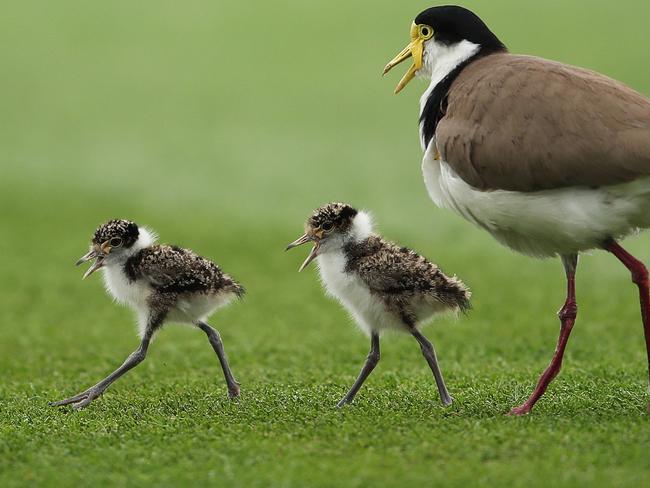
Mr Jones said the length of a plover’s breeding season depended on wet seasons and the availability of insects to feed on.
“The reason there’s so many plovers in town is because of lawn and mown grass. That’s absolutely perfect,” he said.
“They live on the bugs and the grubs, and the worms and the beetles, and all the things that live in watered mown lawn.

“And so cities are full of them. Every path, every backyard, every front yard, every park.
“If there’s plenty of food and they raise one lot of chicks, they’ll go ‘well, let’s go again’ because maybe next year it’ll be dry, and we won’t be able to do anything.
“Because it’s been so wet over a couple of years, they’ve just been pumping out babies like crazy. And lots of them have made it.
“So what you’ve got now after two years of wet is a population explosion.
“There’s birds everywhere, a couple of years old. They can start breeding in their first year.
“So they’re all out looking for a space away from mum and dad and finding it’s pretty busy.
“They’ve pretty much been continuously breeding for two years.
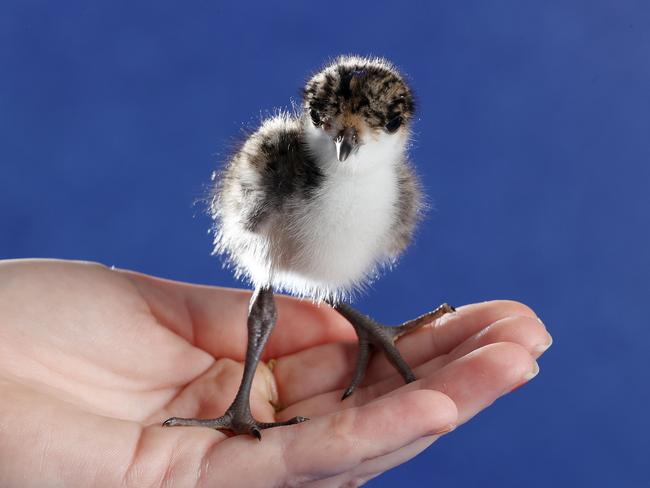
“That’s a lot of baby plovers, even if a lot of them don’t make it, get taken by cats and foxes, it’s still a lot, and they’re all busy.”
Mr Jones said he expected the population would settle down once Queensland experienced drought conditions again.
“During the drought, there were no baby plovers to be seen,” he said.
“They just didn’t happen because there was no food.
“If you’re going to breed, you gotta be able to make the eggs and then feed the chicks, and if there’s no food, then don’t bother.
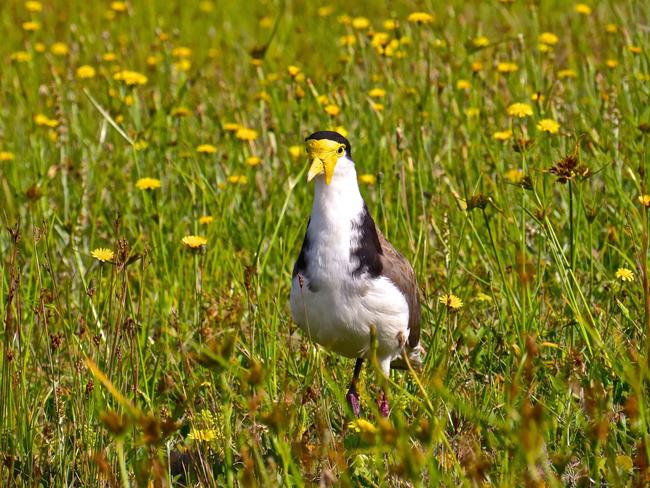
“It’s been wet for a while. In the next couple of years, we’ll go back to the drought phase.
“It’ll be very hard for those birds to find enough food to even nest.
“The population will just go down to its normal level.
“It’s probably peaking now, because we’ve had a series of years in a row, really wet all around Queensland.
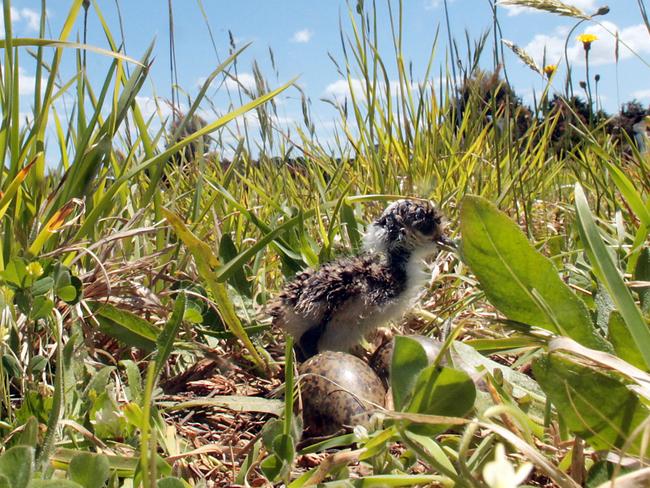
“So the birds have been happily breeding like crazy but that simply won’t last.
“I would probably say in the 40 years I’ve been looking at urban birds, there’s more birds in general in cities now because of the conditions being so good.
“When it goes dry again, as it will inevitably, everything will just settle down again.”
Mr Jones recommended simply walking the other direction if the “terrifying” calling card of the plover sounded.
“They’re a native bird and they’re doing very well,” he said.
“They have moved into towns with us, so we kind of need to work out how to tolerate one another.
“They’re trying to protect their precious babies, obviously, and that’s what they do.
“That screeching sound — which sounds terrifying is supposed to be terrifying — is supposed to be a warning.
“They are saying ‘I’ve got something I want to protect here, these are my precious chicks, don’t come any closer’.
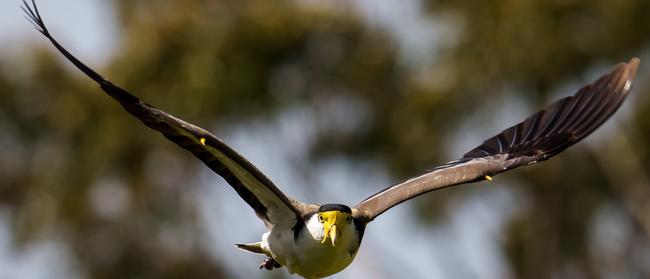
“It’s probably a good idea to take notice of what that warning is, and just head out the other direction … rather than just blunder on going towards them, saying ‘why are you doing this?’ We know why they’re doing it.
“They see you as a potential predator so when they see the fear in your eyes they say ‘that’s what’s supposed to happen, you’re supposed to be scared of this, get out of here’.
“They aren’t going to hit you, even though they look like they’re going to hit you.
“But go the other direction walking backwards if you possibly can. Don’t expose you back to the birds.
“It’s best not to go in there and just keep away from it.”
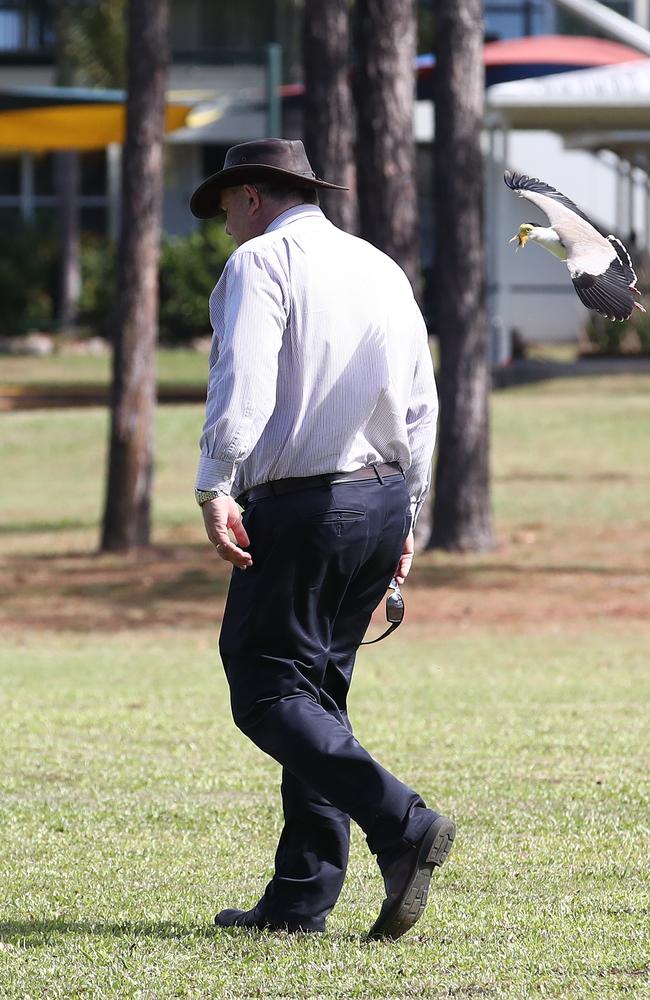
Mr Jones said swooping plovers at low tide on Blacks Beach was “strange” and he could only imagine there was either a nest behind the dunes or they had learned how to repel human “predators” at any time.
“I don’t think they’re nesting there,” he said.
“I think there is something strange about them, and their willingness to attack people so readily.
“Normally if they were in the wild, if it was a natural situation, their predators wouldn’t be coming at them all the time.
“So I think they learn people will go away if you swoop them, whether there’s chicks there or not.”
Mr Jones found the story of a rogue seagull, properly known as a silver gull, on the beach even stranger.
“That’s very unusual … they don’t normally attack,” he said.
“I think this one’s picked up a bad habit from its mates.
“It might if it’s stuck there, and it’s the only seagull in the vicinity, it’s just trying to hang out with some (birds) who will be willing to hang out with them.
“Gulls generally don’t swoop people unless they want your chips.”
Mr Jones said while the birds could breed “all year round”, he would expect them to ease off in the colder months.
“As soon as it starts getting cold, the insect life will die down completely, and they won’t have much food, so there will be several months at least when they won’t be breeding at all,” he said.
“They’ll go off and hang out somewhere, and people won’t even notice that because you don’t notice it when they’re not doing it.”
But then the magpies will be preparing to nest, won’t they?
“Just when you thought it was safe,” he joked.



